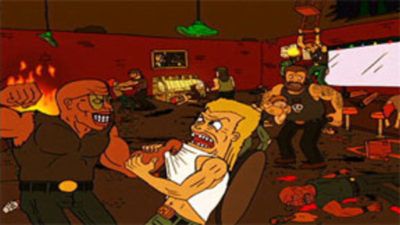As we near the end of 2022, nobody really wants to talk about 2015. But one 2015 topic has piqued my interest as of late: the decision of the Old Guard of the DSA to ride the 2016 Bernie Sanders campaign to membership growth. As the Old Guard reflects back on it – if it reflects back on it – I suspect it has mixed feelings about how it all went down.
Category: Activism (Page 12 of 29)
These are posts on activism from the blog Base and Superstructure. This takes many forms. The focus here is on political activism, above all on activist organizing and base-building. One concern is how to build effective movements. There’s also a need to create solidarity with fellow members and build coalitions with other groups. The main aim of good movements is to work together to advance material interests. This section also includes critiques of electoral work, and discussion of how and when to use elections to advance activist goals. Navigating the balance between grassroots work and electoral work is difficult for everyone.
Leftists often bicker over how to use Twitter. Is it an essential communication tool allowing us to break out of the mainstream media monopoly on thought and opinion? Or is it a travesty and driver of conflict in our movements?
In truth, it’s both of those things. Or at least it can be. But I’d like to point out a better way of thinking about Twitter.
In short, Twitter is like a chat in a big, boozy bar. It can be a source of news or information. And it can lead to valuable insights. But it’s also often messy and destructive. And it’s full of clowns who start fights for no good reason. You can participate in it, but maintain a healthy, robust skepticism.
Image Source
In an earlier post, I discussed the distinction between mutual aid and charity. Among other things, I pointed to this distinction as a false dichotomy. In truth, mutual aid and charity operate more as end points along a spectrum. Non-profits even sometimes engage in mutual aid, while mutual aid orgs sometimes do charity. I want to expand on all that in this post by bringing in the notion of prefigurative politics.
But, more than anything, I want to bring in the issue of how people set up a mutual aid org from the beginning. So, as a starting question, why do mutual aid orgs form? What do they want to accomplish? What do they look like?
So, you’ve joined DSA. You attended your first meeting the other day. And like any right-thinking socialist at their first DSA meeting, you identified your politics as ‘to the left of the DSA.’ Now you’re sitting around thinking, ‘why doesn’t DSA have a real socialist caucus?’
Good think you clicked this blog post, my friend, because you’re in luck. I’m going to explain the 5 steps to start a DSA caucus. Read on and enjoy!
Suppose you’re in charge of designing the environment in the workplace or the classroom. What if you could design it so that everyone can access it. What if by designing features so that disabled or marginalized people can use it in the best ways for them, everyone can use it in the best ways? That’s the basic premise behind universal design. When you design something for those with the least access, you thereby design it for everyone.
It sounds great. But does universal design work? Does it run into limits? Let’s think about these questions.




